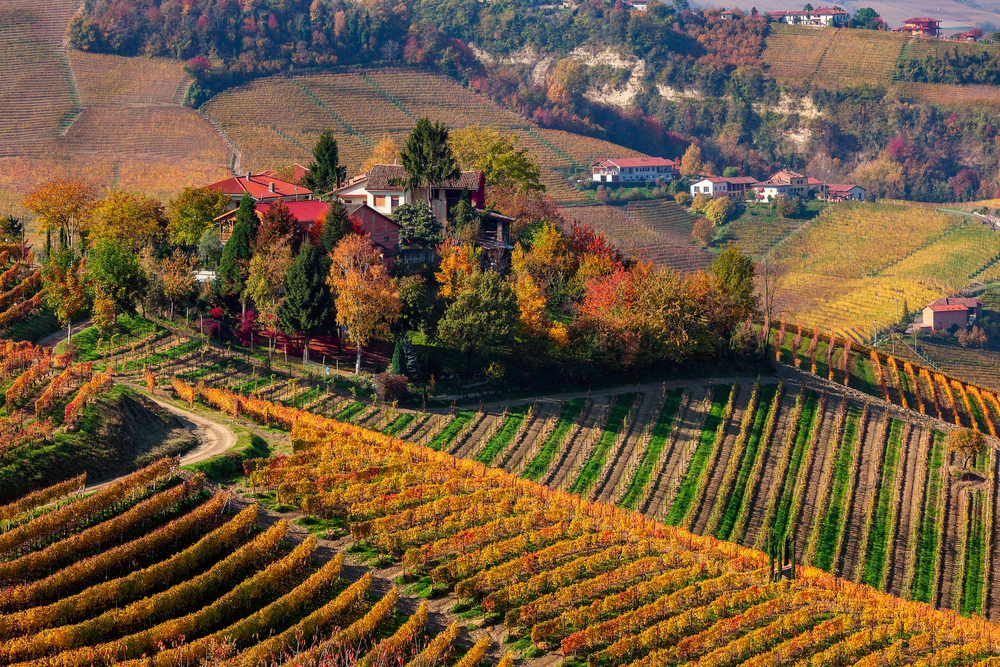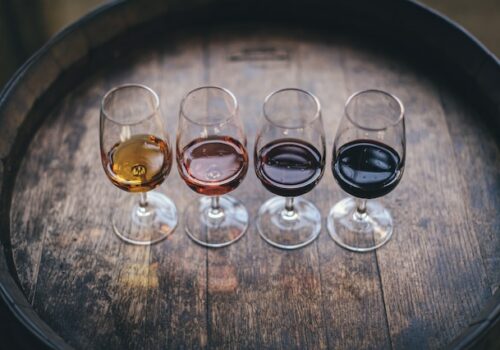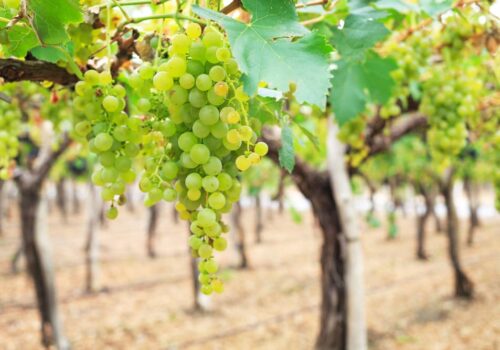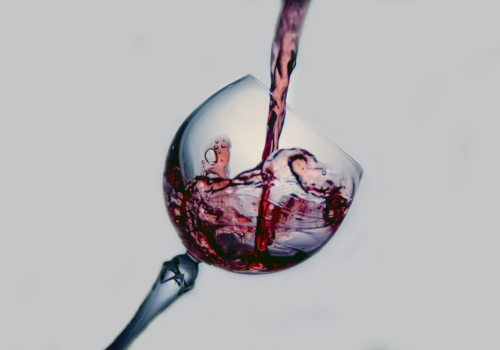Grape Varieties Grown in Northern Vineyards
Welcome to the world of northern European vineyards! There are a variety of unique grape varieties grown in the chillier climates of northern Europe, and they contribute something special to the wines we love. In this guide, we’ll take a look at the different grape varieties grown in the northern wine regions and the unique characteristics that they impart to the wines produced.
This guide will explore the climate and soil conditions of northern European wine regions, how these factors affect grape growing, and the types of wines produced by the different grape varieties grown here. We will also discuss the interesting facts and figures about the grapes grown in northern Europe and their potential for the future.
We’ll start with a broad overview of the climate of the northern European wine regions, then move on to the specific grape varieties used in France, Germany, Italy, Britain, and Spain. We’ll highlight how the different grape varietals bring something unique to the wines, as well as some of the more interesting facts about the wines made from these grapes.
So let’s get started and explore the fascinating world of northern European wine – thanks for joining us on our journey!
Northern Climate Overview
Grape growing in the northern hemisphere is often complex due to the variability of its climates. These climates range from cool and dry to hot and humid, making it difficult to grow an ideal grape crop each season. As a result, growers must carefully select which varieties are best suited to the climate in order to produce a quality wine.
A cooler climate is generally beneficial for grapes. However, some vineyards experience extreme cold during winter months. In such a climate, hardy varieties that can survive such conditions need to be selected for growing. On the other hand, regions with a warmer climate can benefit from more sensitive varieties that offer a fuller body and better flavours.
The soil type is also important when selecting grapes for wine production. For example, some soil types are more acidic or alkaline than others. As such, vineyards must choose varietals that can withstand the unique conditions of their soil. The soil also affects the amount of water a vineyard can absorb, as some vines need more water in order to produce quality fruits.
Finally, vineyards must consider how the different grape varieties affect the flavour of the wine. Each variety imparts its own distinct characteristics, such as tannins, acidity, sweetness and fruitiness. As such, growers must select varieties that will bring out the desired flavours in the finished wines.
French Grape Varieties
France is widely known for its diverse selection of grape varieties that have been perfected over the years. These grape varieties have been carefully selected in order to produce a range of delicious wines from the country’s different wine regions. Let’s take a closer look at some of the most popular French grapes.
Chardonnay
Chardonnay is one of France’s most popular white grape varieties, and is grown throughout the country from Burgundy in the east to the south of France. Chardonnay is known for its generous balance of creamy fruit flavours and subtle oak notes, making it an ideal choice for many styles of white wine. From Champagne to Chablis and Burgundy, Chardonnay can be found producing quality still wines as well as sparkling wines.
Sauvignon Blanc
Another popular white grape grown in France is Sauvignon Blanc. Sauvignon Blanc is grown in a variety of regions, but produces some of its best examples in Bordeaux and the Loire Valley. This grape variety is known for its signature herbal and grassy notes that give wines a distinct character. Sauvignon Blanc is dry and acidic with light fruit flavours that make it a great partner for mild seafood dishes.
Pinot Noir
Pinot Noir is a classic red grape variety that is popular in France and around the world. It is grown mainly in Burgundy, but is also found in other regions such as Champagne and Alsace. Pinot Noir is highly prized for its light body and elegant, delicate red fruit flavours that often display complex notes of earth, mushrooms and spice. Pinot Noir is best enjoyed with lighter dishes like poultry and pork.
Cabernet Sauvignon
Cabernet Sauvignon is a strong, full-bodied red grape variety grown mainly in Bordeaux, although examples can also be found in other regions of France. Cabernet Sauvignon is renowned for its intense fruity flavours and firm tannins which make it a particularly good match for richer dishes such as red meat and game.
These are just a few of the many grape varieties grown in France and used to craft some of the finest examples of wines. Each variety offers its own unique set of characteristics, ensuring that you can find a wine style to suit any occasion.
German Varieties
Germany is well known for its white wines, and its grape varieties reflect this. Riesling, Gewurztraminer, Muller-Thurgau, and Silvaner are among the most common German grape varieties, each with its own flavor profile.
Riesling is considered by many to be Germany’s flagship grape variety. It is known to produce dry white wines with notes of citrus, peach, and green apple. These wines often have a characteristic minerality and can range from light and crisp to more full-bodied and intense.
Gewurztraminer is another common German variety. Its name translates to “spicy grape” and it produces wines with intense aromas and flavors of lychee, rose petals, and honey. These wines can be quite sweet, but are also well-balanced and smooth.
Muller-Thurgau is another popular German variety. It produces light, dry white wines with citrus, herb, and floral notes. These wines are relatively low in alcohol and perfect for casual drinking.
Finally, Silvaner is a less well-known but still popular German grape variety. It produces wines that are light and fresh, with fruity and floral notes. These wines tend to be quite easy-drinking and pair well with food.
Overall, German grape varieties are known for producing light, fresh, balanced, and unique white wines. Whether you prefer them dry or sweet, there’s sure to be something to suit everyone’s tastes!
Italian Varieties
Italy is renowned for its variety of wines, with a particular focus on the grape varieties that are used to make them. Italian wine grapes are grown in a range of climates, from cool alpine vineyards to the hot and dry regions of southern Italy.
The most popular red Italian wine grape varieties are Sangiovese, Nebbiolo, Barbera, Montepulciano, Primitivo, and Aglianico. These Italian wines are known for their medium body, tart red fruit flavours and low tannin levels. They are often aged in oak barrels to give them a smooth and complex flavour.
For whites, Italian wines are usually made using Trebbiano, Greco, Verdicchio, and Pinot Grigio grape varieties. These lighter white wines are characterised by vibrant acidity, floral aromas and light citrus fruit flavors.
Italian winemakers have a strong tradition of blending different grape varieties to create unique combinations of flavors. This allows winemakers to produce unique wines with unique flavor profiles.
The combination of warm temperatures and cooler nights allow for the slow ripening of grapes, giving Italian wines a long finish and intense flavor that is impossible to replicate in other climates.
The diversity of Italian wine grapes are the reason Italy’s wines are so diverse and appreciated around the world. Whether it’s a light white wine or a bold red, Italian wines are sure to delight any connoisseur of fine wines.
British Grapes & Wines
The wine scene in the United Kingdom has developed massively over the past few decades, with the rise of English and Welsh vineyards producing a variety of wines from British-grown grapes. There is an array of grape varieties cultivated in the UK, each lending its own unique character to the wines they produce.
English sparkling wines are the main focus for many producers, and a variety of grape varieties go into their production. Chardonnay and Pinot Noir are two of the main varieties grown for sparkling wines, but other sparkling grapes used include Pinot Meunier, Pinot Blanc and Seyval Blanc. English still wines also benefit from a mix of grape varieties, including Bacchus, Reichensteiner and Madeleine Angevine.
Welsh vineyards are using mainly red grapes to produce deep and intense still wines. Garnacha and Tempranillo are varieties popularly grown in the Pembrokeshire region, while traditional whites such as Ortega are becoming more widely seen. In both England and Wales, oak-aged wines are also being produced, made either with traditional Vitis Vinifera cultivars or hybrids such as Solaris and Seyval Blanc.
The most northerly vineyards in Scotland mostly produce ‘table’ wines, although some are attempting to make sparkling wines from the native blackberry varieties grown in the region. There is a growing interest in producing high-quality wines from grapes grown in Scotland and the use of local varieties has increased exponentially in recent years.
The plentiful vineyards of the UK provide a variety of tastes and styles of wine, from light and fruity to full-bodied and complex. The key is to find the perfect combination of grape varieties for your preferred taste, to create a wine that you will love.
Spanish Grape Varieties
When looking for amazing wines, Spain is a great place to start! Spain offers a wide range of grape varieties that are used in creating unique and delicious wines.
Grapes like the Garnacha, Tempranillo and Monastrell (also known as Mourvedre) are just some of the popular ones used in Spanish wine making.
The Garnacha is a red grape variety that produces wines that are fruity, spicy and full-bodied. The Garnacha is often blended with other red grapes and is used to make both white and red wines.
Tempranillo is another red grape variety found in Spain. It is known for producing wines with intense aromas of berry fruits and herbs. Wines made from Tempranillo have low acidity levels and possess an earthy quality.
Monastrell (Mourvedre) grapes produce some of Spain’s most luxurious red wines. Monastrell wines have a deep color and offer intense aromas of blackberry, raspberry and plum. They have medium levels of tannins and often feature flavors of spice.
Spain also has some great white grapes! Verdejo, Albarino and Macabeo are three common white varieties found in Spanish winemaking. Verdejo’s wines offer tropical aromas of citrus and pineapple while Albarino’s are known for their floral and herbal notes. Macabeo’s wines have a dry taste and feature nutty and citrusy flavors.
Spanish wines are known for their unique and complex flavors that are sure to tantalize your tastebuds! If you’re looking to explore the world of wine, Spanish varieties are definitely worth trying out.
Interesting Facts & Figures
Northern wine regions contain an array of different grape varieties, each with their own unique characteristics. Below we will explore some of the fascinating facts about the grape varieties grown in these regions.
- In France, the most commonly planted red grape variety is Pinot Noir. It is typically used to create light-bodied red wines with high acidity and delicate aromas.
- Germany is known for its Riesling grapes which are renowned for their crisp, mineral flavors and overall freshness.
- Italy is home to Sangiovese which is used to make bold, tannic red wines. This variety is often blended with other Italian varieties such as Merlot and Cabernet Sauvignon.
- The UK has seen a surge in popularity of sparkling wines made from traditional Champagne grapes, such as Chardonnay, Pinot Noir and Pinot Meunier.
- Spain is known for its Garnacha grapes, which are used in making rich, full-bodied reds. These grapes are also blended with other Spanish varieties such as Tempranillo, Cariñena and Monastrell.
Grapes grown in northern regions also boast a variety of health benefits. Some of these include being a rich source of polyphenols which can help reduce inflammation, fight free radicals that can damage cells, and improve heart health.
Overall, northern grape varieties offer a wide array of flavor profiles and many health benefits. They provide winemakers with greater diversity when crafting their wines and offer consumers exciting new options to explore.
Future Outlook for Northern Winemaking
As with most agricultural industries, the future of northern winemaking depends on the grape varieties chosen and how they are used in wine production. Over the years, many grape varieties have been developed to extract or enhance certain flavours. In northern vineyards, a range of grape varieties have been identified that have unique flavor profiles and possess qualities which make them ideal for winemaking.
The future of northern winemaking will be shaped by these grape varieties and the methods used to cultivate them. By selecting the right grape variety for the right climate and soil, winemakers can create wines with distinctive flavors and characteristics. This will also allow them to experiment with new and exciting flavours that may not have been possible before.
In addition to this, advances in technology such as precision viticulture, where sensors are used to monitor and adjust various conditions in a vineyard, will also play an important role in northern winemaking. This technology can help winemakers identify which grape varieties are best suited for their particular climate, soil and other conditions, making it easier for them to produce quality wines.
It is essential to continue researching and experimenting with different grape varieties to ensure the future success of northern winemaking. As the climate changes, so does the need for different varieties that are resilient and capable of surviving more extreme weather conditions. We must also consider new methods and techniques that could potentially benefit winemakers in the long run.
Overall, the future of northern winemaking looks bright and exciting. With proper research and experimentation, winemakers will be able to create unique and interesting wines that will delight consumers around the world.
Conclusion
Northern vineyards are characterized by cooler climates and a wider range of grape varieties than can be found in other regions. Taking into account this variability, we have looked at the different varieties grown in France, Germany, Italy, Britain and Spain, and how they contribute to the unique flavors of wines from these countries.
The French are known for producing reds like Pinot Noir, Merlot and Cabernet Sauvignon, as well as whites such as Chardonnay and Sauvignon Blanc. Germany produces whites such as Riesling and Gewürztraminer, while Italy produces Sangiovese and Nebbiolo reds as well as Pinot Grigio whites. Lastly, Britain is home to a number of grapes including Ortega, Seyval Blanc and Phoenix. Spanish grapes include Tempranillo, Garnacha, and Monastrell, with white grapes such as Albarino.
The unique flavors imparted by these varieties make northern wines interesting and varied, making them popular around the world. With climate change altering traditional growing conditions, it will be fascinating to see which varieties become more prominent in the future, shaping the way we view northern winemaking.




